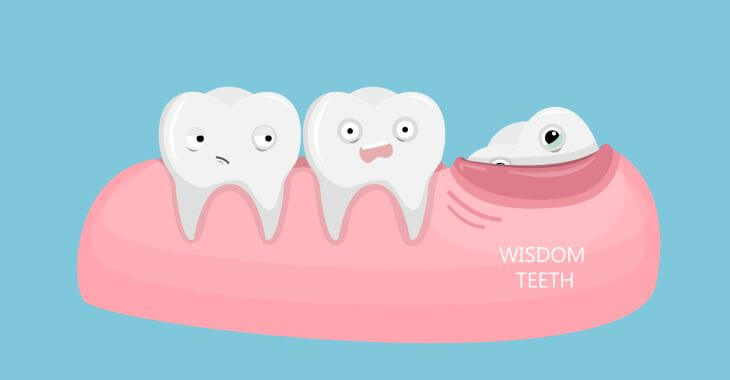How To Tell If Your Wisdom Teeth Are Coming In

The third and final set of molars to come in are called the wisdom teeth. Nicknamed “wisdom teeth” due to their appearance around the time teens become adults, these large molars are known for causing oral health problems. While many sets of wisdom teeth emerge without problems, there are others that can become impacted or cause infections, misalignments or other health issues. Here is how to tell if your wisdom teeth are coming in and if you need dental care to address your new molars.
Wisdom Teeth: Why, When and Where
Why do you get wisdom teeth and are they necessary? Most people have 28 teeth before the third molars emerge, a full set of teeth. It is believed that the third molars are an evolutionary leftover – our ancestors needed a third set of molars to replace worn teeth as they entered adulthood. We do not need wisdom teeth, but most people still have at least one form in their jaw by adulthood.
There are four possible wisdom teeth – one at each of the four back corners of your mouth, which is where they can be expected. There are two on the back ends of the upper teeth and two on the lower set. These molars are large, with up to four roots, and they require adequate space to come in properly. The concern for some individuals is there is not enough room in the mouth for these third molars to emerge without shifting other teeth, and some are not able to emerge at all, which causes impaction in the gums.
Most people receive their wisdom teeth around their 18th birthday, but it can range from the late teens to early twenties. While there are four possible wisdom teeth, not everyone receives all four or any at all and they can arrive during a span of several years. It is important to know how to tell if wisdom teeth are coming in and whether or not any dental care is needed to prevent oral health problems.

Top 4 Signs and How to Tell If Wisdom Teeth Are Coming In
For most people, wisdom teeth can begin emerging anytime after their 16th birthday. The molars are forming and begin pushing up through the gums in the late teens or even in the early 20s. Like all the teeth before them, the third molars should emerge without any assistance. For healthy wisdom teeth, the signs and symptoms of when they are coming in include:
- Pain or Discomfort
- As the third molars begin pushing up through the gums, there is some pain and discomfort. It is common to feel some aching or pain behind the last molars as these large teeth slowly push upward. The pain is typically mild – it can be more pronounced as the molar reaches the cusp and is pushing through the top of the gums. Pain may be felt when chewing with the molars adjacent to the new teeth that are emerging.
- Gum Tenderness, Redness or Swelling
- As the top of the third molars begin to cut through the gum tissue, it can cause irritation and inflammation in the gums. You may notice your gums behind your last molars are red, tender and swollen, a definite sign that the wisdom teeth may be trying to emerge. In some cases, gum infections can occur when wisdom teeth are coming in, resulting in increased inflammation, redness and pain.
- Bad Breath
- There are many possible causes of bad breath, but if bad breath is combined with tender or swollen gums in the back of the mouth, it can be a sign of wisdom teeth coming in. Bacteria can enter the open tissue as wisdom teeth emerge, resulting in gum infections and bad odors in the mouth. You may also have an unpleasant taste in your mouth, especially if there is an infection.
- Gum Flap
- You may notice a flap of skin covering the gums behind your molars as an early sign your wisdom teeth are on their way. This flap of tissue can be felt by your tongue or you may be able to see it when looking inside your mouth. In some cases, you may notice bleeding around the flaps and gums as the wisdom teeth are coming in.
When to See a Dentist
Now that you know how to tell if wisdom teeth are coming in, it is important to visit your dentist if you see any of the signs. There are many complications that can occur when the last molars are developing. Some wisdom teeth can grow in sideways or become impacted in the gums. In severe cases, the molars can cause serious infections or sinus problems, as well as misaligned teeth or bite. Your dentist can monitor your wisdom teeth formation and determine if there are any potential issues. Many teens and young adults have their wisdom teeth removed to avoid oral health problems.
The information provided on this website, including text, graphics, images, and other materials, is intended solely for informational purposes and should not be used as a substitute for professional medical advice, diagnosis, or treatment.




)